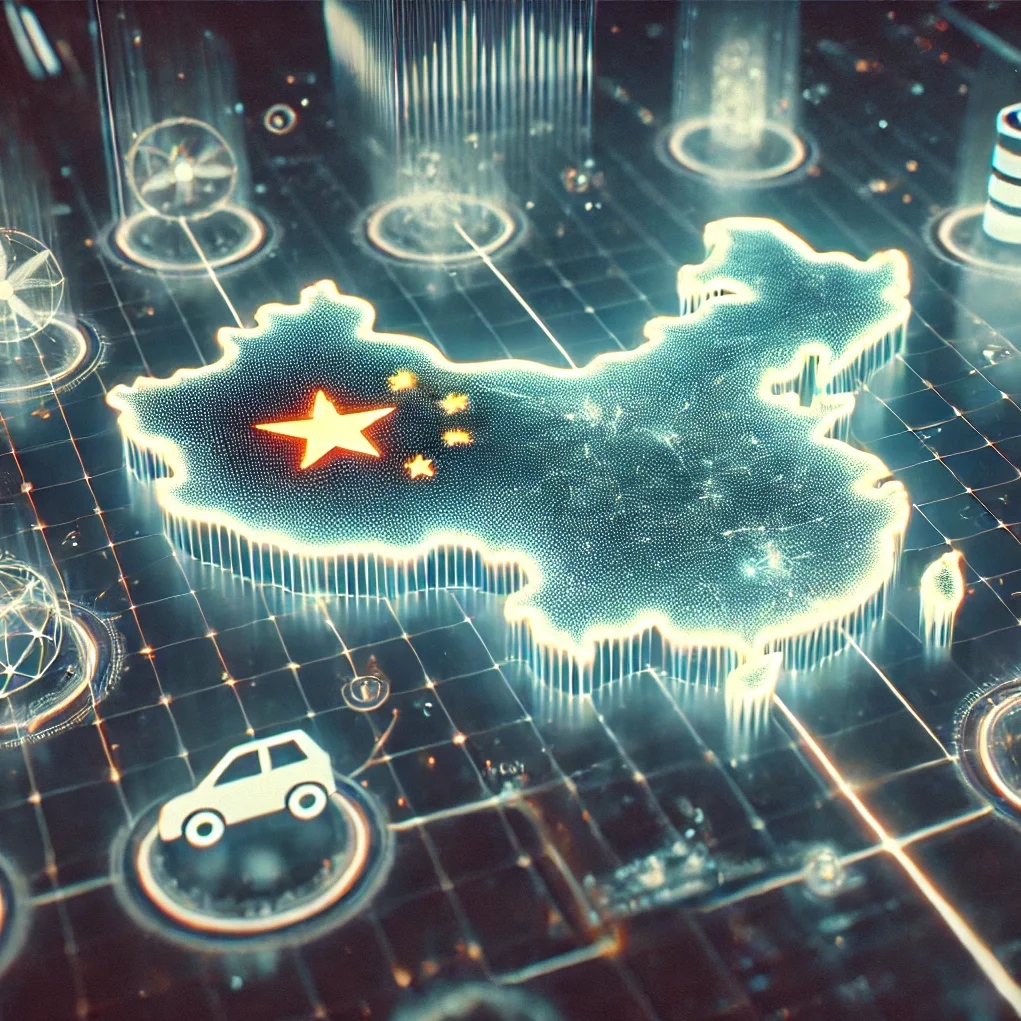China's EV Dominance: A Threat Or Opportunity For The US Auto Industry?

Table of Contents
China's EV Market Leadership: A Deep Dive
China's dominance in the EV market is undeniable. This stems from a confluence of factors, creating a formidable challenge for US automakers.
Massive Production Capacity and Technological Advancements
- Gigafactories and Production Scale: China boasts numerous massive EV production facilities, often referred to as "gigafactories," significantly exceeding the production capacity of many US plants. This scale allows for economies of scale, driving down production costs.
- Battery Technology Leadership: Chinese companies are at the forefront of battery technology advancements, particularly in areas like solid-state batteries and improved energy density. Government subsidies and research investment have fueled this progress.
- Key Players and Market Share: Companies like BYD, NIO, Xpeng, and Li Auto are rapidly gaining global market share, challenging established brands. BYD, in particular, has become a major global player, showcasing the rapid growth of Chinese EV brands.
- Domestic Market Growth: The sheer size and growth rate of the Chinese domestic EV market are unparalleled. Millions of EVs are sold annually within China, providing invaluable data and experience for Chinese manufacturers.
Supply Chain Control and Raw Material Dominance
China's influence extends beyond manufacturing to the control of crucial EV supply chains.
- Raw Material Acquisition: China holds a significant share of the global supply of crucial battery materials like lithium and cobalt, giving it leverage over pricing and availability. This control over lithium mining and cobalt supply chains creates a strategic advantage.
- Global Supply Chain Impact: This control influences global EV production costs and availability, potentially leading to supply chain disruptions for manufacturers outside of China. EV pricing is directly impacted by the availability and cost of these raw materials.
- Resource Scarcity Concerns: The increasing demand for EV batteries raises concerns about resource scarcity and potential price volatility for lithium, cobalt, and other essential components. This impacts both Chinese and US manufacturers.
Opportunities for US Automakers in the Face of Chinese Competition
While the Chinese EV market presents challenges, it also offers significant opportunities for US automakers willing to adapt.
Strategic Partnerships and Joint Ventures
Collaboration with Chinese EV companies can provide numerous benefits for US automakers.
- Technology Transfer and Innovation: Joint ventures can facilitate the exchange of technology and expertise, accelerating innovation and development in both countries.
- Market Access: Partnerships provide access to the massive Chinese market and established distribution networks.
- Shared Resources and Reduced Costs: Collaboration can lead to shared development costs and access to resources, increasing efficiency and competitiveness. However, careful risk mitigation strategies are necessary.
Focus on Niche Markets and Innovation
US automakers can differentiate themselves by focusing on specific market segments and prioritizing innovation.
- Niche Vehicle Development: Focusing on niche markets like luxury EVs, specialized commercial vehicles, or autonomous vehicles can create unique selling propositions.
- Technological Leadership: Investing heavily in research and development (R&D) in areas like autonomous driving, advanced battery technology, and sustainable manufacturing is crucial for maintaining a competitive edge.
- Government Support: US government incentives and policies, including tax credits and subsidies, are vital in supporting domestic EV development and fostering innovation.
Potential Threats to the US Auto Industry from China's EV Dominance
Despite the opportunities, China's EV dominance poses significant threats to the US auto industry.
Market Share Erosion and Job Displacement
The influx of competitive, lower-priced Chinese EVs poses a risk of significant market share erosion for US manufacturers.
- Job Losses: Increased competition could lead to job losses in US automotive manufacturing, parts manufacturing, and dealerships.
- Supply Chain Impact: Dependence on Chinese components can create vulnerabilities in the US auto supply chain.
- Economic Diversification and Workforce Retraining: Proactive measures, including economic diversification and workforce retraining programs, are essential to mitigate potential job losses.
Geopolitical Implications and National Security Concerns
Reliance on China for key EV components raises critical national security concerns.
- Supply Chain Vulnerabilities: Over-dependence on Chinese supplies creates vulnerabilities that could be exploited in times of geopolitical tension.
- Technology Dependence: Relying on Chinese technology for crucial EV components risks technology dependence and potential intellectual property theft.
- Government Regulation and Policy: Strong government regulations and policies are necessary to diversify supply chains, promote domestic manufacturing, and address national security risks.
Conclusion
China's rapid expansion in the electric vehicle market presents both significant threats and considerable opportunities for the US auto industry. While the potential for market share erosion and national security concerns is real, US automakers can leverage strategic partnerships, focus on innovation, and utilize government support to remain competitive. Navigating this complex landscape requires a multifaceted approach that balances collaboration with strategic self-reliance. The future of the US auto industry in the age of electric vehicles hinges on its ability to adapt and innovate in response to China's EV dominance. To learn more about the strategies and innovations shaping the future of the US auto industry in the face of global EV competition, continue your research on China's EV market and explore the latest developments in electric vehicle technology.

Featured Posts
-
 Dzhidzhi Khadid Rasskazala O Romane S Kuperom
May 04, 2025
Dzhidzhi Khadid Rasskazala O Romane S Kuperom
May 04, 2025 -
 Massive V Mware Price Hike Proposed By Broadcom At And T Reports 1 050 Increase
May 04, 2025
Massive V Mware Price Hike Proposed By Broadcom At And T Reports 1 050 Increase
May 04, 2025 -
 Ufc On Espn 67 Results Sandhagen Vs Figueiredo Full Fight Card Breakdown
May 04, 2025
Ufc On Espn 67 Results Sandhagen Vs Figueiredo Full Fight Card Breakdown
May 04, 2025 -
 Expert Ufc Des Moines Predictions And Analysis
May 04, 2025
Expert Ufc Des Moines Predictions And Analysis
May 04, 2025 -
 Report Sydney Sweeney And Jonathan Davino Meet To Discuss Future
May 04, 2025
Report Sydney Sweeney And Jonathan Davino Meet To Discuss Future
May 04, 2025
